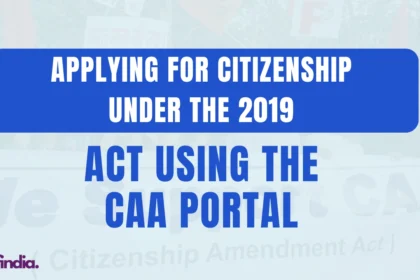New Delhi, November 17 — The India US trade deal delay has become a central point of concern for policymakers, businesses and trade experts as negotiations between the two countries continue to stall. Despite steady progress in strategic defence and technology cooperation, the trade leg of the relationship remains stuck, raising questions about whether both nations can bridge gaps in tariffs, digital rules and market access.
According to diplomatic observers, the prolonged delay in finalising the bilateral trade agreement reflects deeper structural differences between the two economies at a time when global realignments are accelerating.
A Trade Deal That Has Missed Several Windows
Officials familiar with negotiations indicate that both countries have struggled to align on key issues such as market access, agricultural tariffs, data governance, and digital trade rules.
For nearly three years, the trade deal has been discussed in high-level meetings but without consensus on a framework.
Trade economists warn that the India US trade deal delay risks reducing competitiveness for both sides. American firms are seeking greater access to India’s large consumer market, while Indian exporters continue to face tariff-based disadvantages in sectors like steel, textiles, pharmaceuticals and IT services.
Strategic Partnership Strong, But Trade Leg Slipping
Despite the trade gap, India–US ties are stronger than ever on defence, technology, and geopolitical cooperation.
Key strengths include:
- Joint work on semiconductor supply chains
- Defence manufacturing collaboration
- Intelligence and Indo-Pacific maritime partnerships
- Cooperation in AI, cybersecurity and clean energy
Analysts note that both nations see each other as vital strategic partners — but the commercial leg of the partnership remains underdeveloped.
A senior policy analyst explains:
“We see deep alignment on strategy but hesitancy on trade. Both sides are cautious due to domestic political pressures.”
Election Cycles Impact Trade Priorities
The U.S. presidential election cycle, combined with upcoming elections in India, has created an atmosphere where governments often avoid major trade concessions that could be framed politically.
Trade experts say this timing has played a major role in slowing negotiations, with both sides preferring incremental progress rather than a comprehensive agreement.
Tariffs, Agriculture & Digital Rules Remain Sticking Points
1. Tariffs on Agricultural Goods
The U.S. has long sought lower tariffs on nuts, fruits, dairy and certain grains. India has resisted due to farmer-protection policies.
2. Digital Trade and Data Localization
American companies want relaxed rules for cross-border data flows, but India’s emerging digital-sovereignty framework has a more protectionist structure.
3. Medical Devices & Pharmaceuticals
Price caps and regulatory hurdles remain unresolved concerns for U.S. manufacturers.
4. H-1B and Skilled Worker Policies
India wants expanded mobility for skilled professionals — something the U.S. has only partially addressed.
Impact on Businesses & Investments
Businesses on both sides are calling for clarity.
Indian exporters say the deal delay jeopardises competitiveness, especially compared to nations like Vietnam or Mexico that enjoy trade agreements with the U.S.
American companies in India face unpredictability in issues like data governance and tariff schedules.
Despite the challenges, bilateral trade reached over $190 billion, indicating strong commercial integration even without a formal free-trade framework.
Geopolitical Stakes: China’s Shadow
With both nations wanting to reduce dependence on China, analysts say the trade deal could enhance supply-chain resilience.
But delay weakens the opportunity for India to anchor itself as a manufacturing alternative.
A retired diplomat notes:
“The India–US trade deal delay isn’t just a commercial setback—it’s a strategic loss in the Indo-Pacific context.”
What Happens Next?
Officials suggest two possible paths:
Path A: A “Mini Deal”
Limited agreement covering tariffs on select goods, data protection guidelines and investment safeguards.
Path B: Post-Election Reset
Negotiations restart in 2026 when political cycles are stable on both sides.
Trade insiders lean toward a mini deal as the most likely outcome in 2025–26.
Conclusion
The India US trade deal delay underscores a paradox: while the strategic partnership grows stronger every year, commercial negotiations lag behind.
With global trade realignments accelerating, both countries risk missing an important window of opportunity.
The coming months will be crucial in determining whether both sides can align trade interests with broader geopolitical goals — or whether the delay becomes a longer-term hurdle in bilateral relations.


























